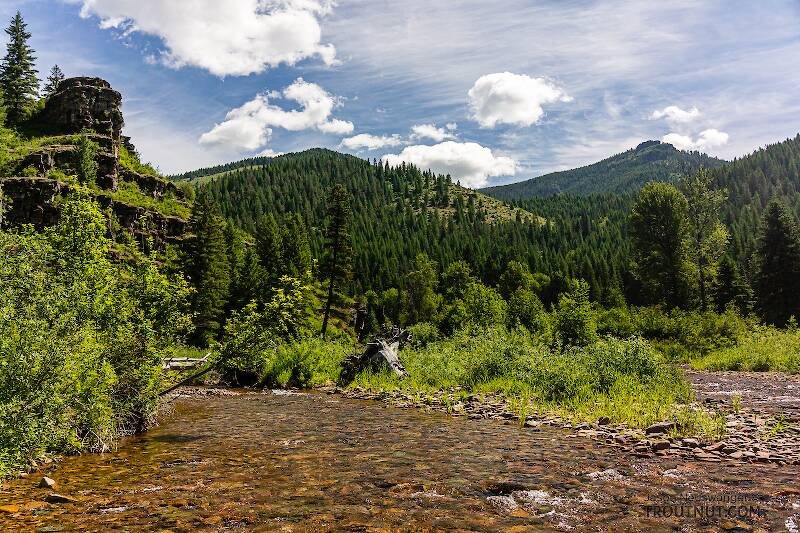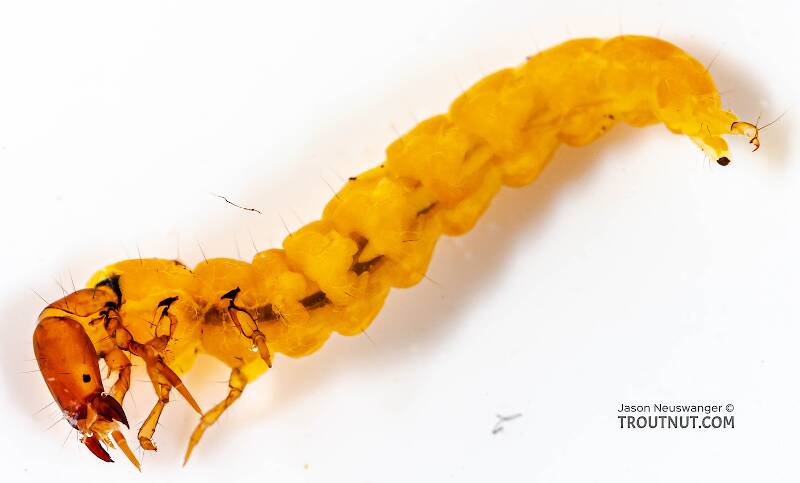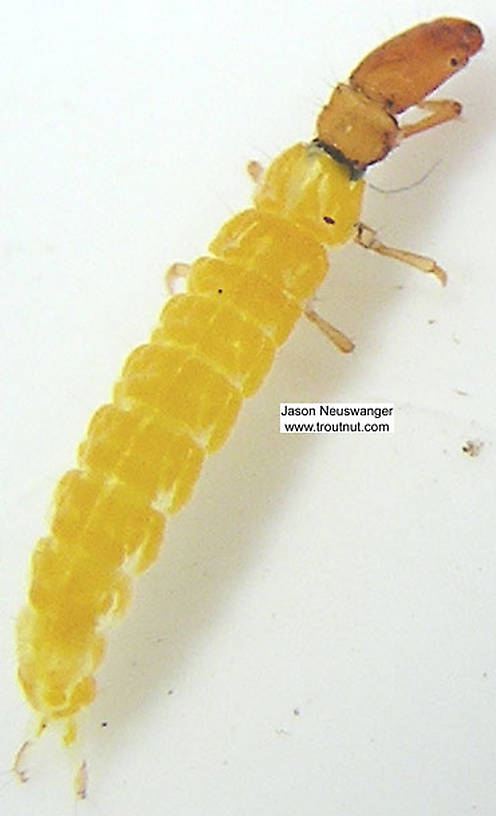
Salmonflies
Pteronarcys californica
The giant Salmonflies of the Western mountains are legendary for their proclivity to elicit consistent dry-fly action and ferocious strikes.
Featured on the forum

This specimen resembled several others of around the same size and perhaps the same species, which were pretty common in my February sample from the upper Yakima. Unfortunately, I misplaced the specimen before I could get it under a microscope for a definitive ID.

Troutnut is a project started in 2003 by salmonid ecologist Jason "Troutnut" Neuswanger to help anglers and
fly tyers unabashedly embrace the entomological side of the sport. Learn more about Troutnut or
support the project for an enhanced experience here.
Caddisfly Genus Chimarra (Little Black Sedges)
Chimarra aterrima is the most important species.
Where & when
The pupae emerge by crawling out onto land.In 539 records from GBIF, adults of this genus have mostly been collected during June (26%), July (19%), May (18%), August (15%), September (8%), and April (6%).
In 164 records from GBIF, this genus has been collected at elevations ranging from 26 to 8301 ft, with an average (median) of 1240 ft.
Genus Range
Hatching behavior
There are conflicting accounts of the egg-laying behavior of this genus. Gary LaFontaine writes in Caddisflies that they serenely ride the surface in great numbers to oviposit. In Selective Trout, Swisher and Richards say they dive underwater. Their mention is less detailed and I'm inclined to believe LaFontaine, but perhaps some species exhibits each behavior.Specimens of the Caddisfly Genus Chimarra
2 Larvae
Discussions of Chimarra
Emerger pictures anyone???
5 replies
Posted by Hellgie on Mar 30, 2010
Last reply on Apr 9, 2018 by Gazzer
I would like to see a picture of an emerging Chimarra or a pupa stage before emerging if anyone has one. I am baffled and curious to how and when they change from a yellow/orange larva to a black adult fly. Also, what would be a good emerger pattern for this fly? Lafontaine emerger in what color?
ovipositing?
6 replies
Posted by Btopbuckeye on Mar 4, 2015
Last reply on Mar 6, 2015 by Crepuscular
I had a large swarm of black sedges in a size 16 ovipositing today.the females hadvblack wings and body with a green egg sack was just wondering if that is this genus or something totally different
Pupa color?
6 replies
Posted by Frankcoz on Mar 27, 2008
Last reply on Apr 5, 2012 by Entoman
Seems like dead drifting the pupa pattern during the emergence time is a good way to fish this before the adults are on the water.
Does the pupa retain the orange color of the larva or do they have the color of the adult?
Does the pupa retain the orange color of the larva or do they have the color of the adult?
bright green?
1 replies
Posted by Phishheaduj on Jan 12, 2009
Last reply on Jan 12, 2009 by Taxon
i recently came across with a bright green one of these. Is that the same or a completely different species?
Start a Discussion of Chimarra
References
- LaFontaine, Gary. 1981. Caddisflies. The Lyons Press.
- Schwiebert, Ernest G. 1955. Matching the Hatch. MacMillan Publishing Company.
- Swisher, Doug and Carl Richards. 2000. Selective Trout. The Lyons Press.
Caddisfly Genus Chimarra (Little Black Sedges)
Taxonomy
19 species (Chimarra adella, Chimarra angustipennis, Chimarra augusta, Chimarra beameri, Chimarra buenoi, Chimarra butleri, Chimarra elia, Chimarra falculata, Chimarra feria, Chimarra florida, Chimarra holzenthali, Chimarra idahoensis, Chimarra lara, Chimarra moselyi, Chimarra parasocia, Chimarra primula, Chimarra siva, Chimarra texana, and Chimarra utahensis) aren't included.



